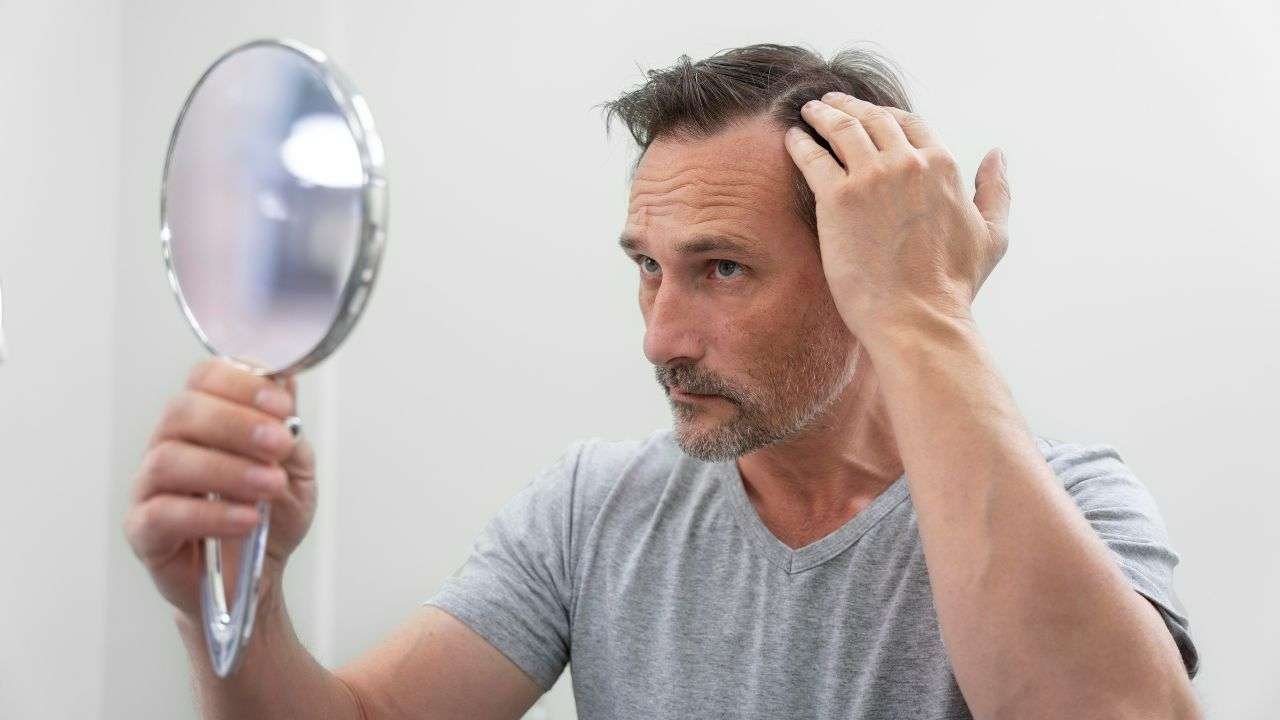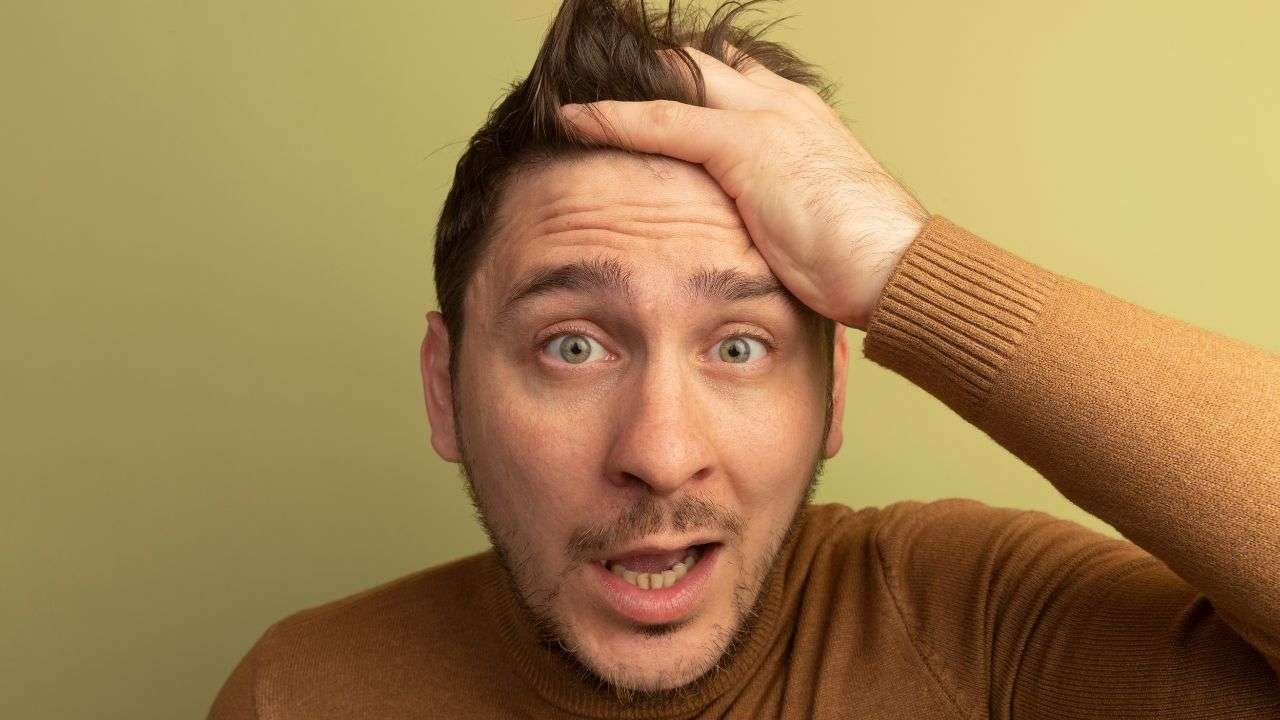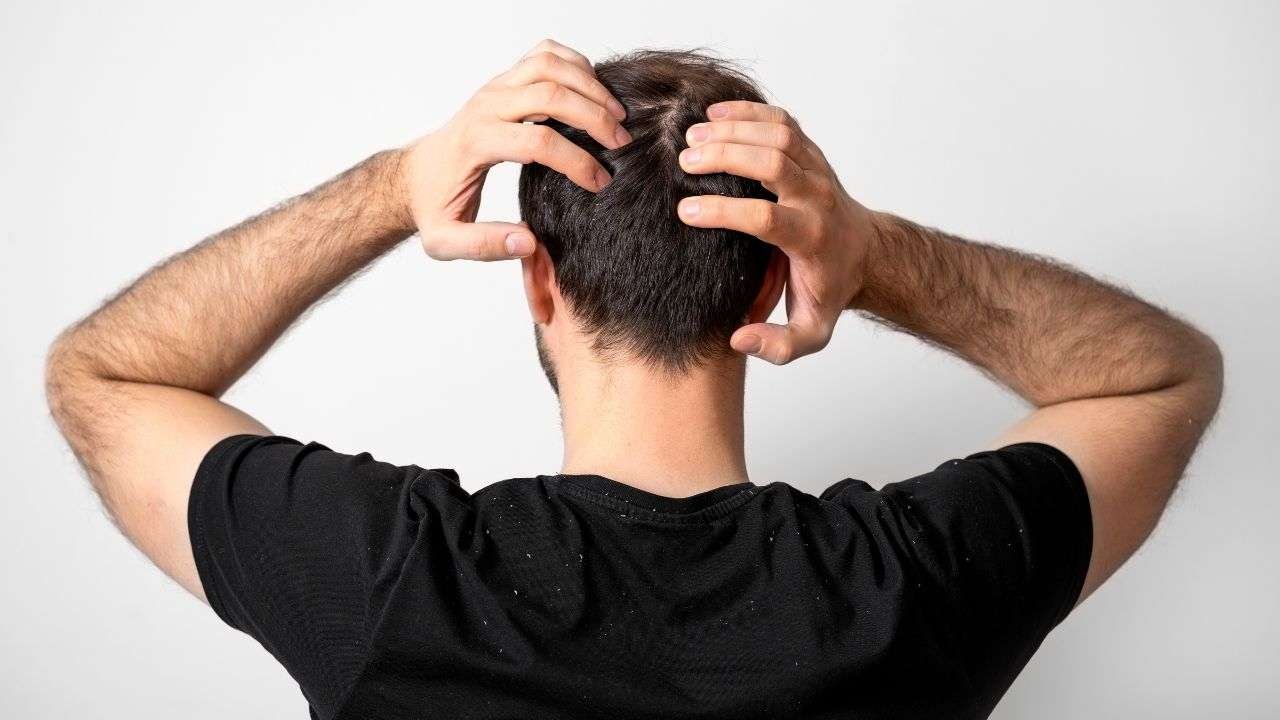Male pattern baldness, medically known as androgenetic alopecia, is the most common form of hair loss in men. It typically manifests as a receding hairline and thinning on the crown, profoundly affecting many individuals’ self-image and confidence. This article delves into the scientific underpinnings of male pattern baldness, highlighting the role of testosterone and its byproduct dihydrotestosterone (DHT) in hair follicle miniaturisation. We also explore the latest global and Indian statistics to understand its prevalence among Indian men.
What is male pattern baldness?
Male pattern baldness, also known as androgenetic alopecia, is a common type of hair loss that affects men of different ages and ethnicities. It is characterised by a receding hairline and thinning of hair on the crown and temples of the head. According to the Cleveland Clinic, male pattern baldness affects about 85% of men by the age of 50.
The Role of Testosterone in Male Pattern Baldness

Testosterone is essential for the proper development and functioning of the male body, including the development of secondary sexual characteristics. In order to make the body fit overall, one needs to balance their testosterone levels and make lifestyle changes. A depleting testosterone might also cause you hair loss. However, it’s the conversion of testosterone to DHT by the enzyme 5-alpha reductase that’s closely linked to male pattern baldness. DHT binds to receptors in hair follicles, causing them to shrink and eventually stop producing hair. It’s not the amount of testosterone or DHT that causes baldness but rather the sensitivity of hair follicles to DHT, which is determined by genetics.
Global Statistics on Male Pattern Baldness
Recent studies have shed light on the prevalence of male pattern baldness around the world. A study from the University Hospital of Bonn found that rare genetic variants also contribute to male pattern baldness, with five significantly associated genes identified through the analysis of 72,469 male participants. Another survey highlighted that countries like Spain, Italy, and France have some of the highest percentages of bald men, with figures reaching up to 44.50% in Spain.
Statistics in India
In India, male pattern baldness is a growing concern. It was projected that almost 50% of Indian men would experience hair loss by 20236. Young adults, especially those in their early 20s, are increasingly showing signs of early hair loss and premature graying7.
Addressing Male Pattern Baldness
While male pattern baldness is largely genetic, there are treatments available that focus on blocking DHT production or stimulating hair growth. It’s important for individuals experiencing hair loss to consult with healthcare professionals to explore their options and find a treatment plan that suits their specific needs.
In conclusion, male pattern baldness is a widespread condition influenced by genetic sensitivity to DHT. With advancements in research and treatment, there is hope for those affected to manage this condition effectively.
What causes male pattern baldness?

The main cause of male pattern baldness is a combination of genetics and hormones. Some men inherit genes that make their hair follicles more sensitive to a hormone called dihydrotestosterone (DHT), which is derived from testosterone. DHT can shrink the hair follicles and shorten their growth cycle, leading to thinner and weaker hair. Over time, the hair follicles may stop producing hair altogether.
However, testosterone alone does not cause hair loss. According to Healthline, there is no direct link between the levels of testosterone and hair loss. It depends on how sensitive the hair follicles are to DHT and how many androgen receptors they have. Therefore, not all men with high testosterone levels will experience hair loss, and not all men with hair loss will have high testosterone levels.
Other factors that may contribute to or worsen hair loss include stress, diet, illness, medication, and environmental factors.
What are the effects of male pattern baldness?
Male pattern baldness can have physical, psychological, and social effects on men. Some of the possible effects are:
- Reduced self-esteem and confidence
- Increased anxiety and depression
- Impaired quality of life and well-being
- Social stigma and discrimination
- Reduced attractiveness and sexual appeal
- Increased risk of sunburn and skin cancer on the scalp
How can male pattern baldness be treated?

There is no cure for male pattern baldness, but there are some treatments that can slow down, stop, or reverse hair loss in some cases. Some of the common treatments are:
- Medications: Finasteride and minoxidil are two FDA-approved drugs that can help prevent or restore hair loss in men. Finasteride works by blocking the conversion of testosterone to DHT, while minoxidil works by stimulating blood flow and nutrient delivery to the hair follicles. Both drugs need to be used continuously to maintain their effects, and they may have some side effects such as irritation, itching, sexual dysfunction, and increased heart rate.
- Hair transplant surgery: This is a surgical procedure that involves moving healthy hair follicles from one part of the scalp to another, usually from the back or sides of the head to the front or top. The transplanted hair follicles will continue to grow normally in their new location, creating a natural-looking hairline and fuller hair. However, this procedure can be expensive, invasive, and painful, and it may require multiple sessions and maintenance.
- Lifestyle Changes: Lifestyle factors such as diet, stress, and sleep can also impact hair health. A balanced diet rich in essential nutrients, managing stress through relaxation techniques and ensuring adequate sleep can contribute to overall hair health.
- Emerging Treatments: Research is ongoing into new treatments for male pattern baldness, including stem cell therapy and platelet-rich plasma (PRP) injections. These treatments aim to stimulate hair follicles to promote new hair growth.
- Platelet-rich plasma (PRP) therapy: This is a relatively new and experimental treatment that involves injecting plasma enriched with platelets and growth factors into the scalp. The plasma is derived from the patient’s own blood and is supposed to stimulate the healing and regeneration of the hair follicles. However, the effectiveness and safety of this treatment are still under investigation, and it may not work for everyone.
- Styling techniques: Some men may opt for simple and non-invasive ways to cope with hair loss, such as changing their hairstyle, using hair products, wearing hats, wigs, or hairpieces, or shaving their heads completely. These methods can help conceal or enhance the appearance of the hair, but they do not address the underlying cause of hair loss.
Conclusion
Male pattern baldness is a common and complex condition that affects millions of men around the world. It is caused by a combination of genetic and hormonal factors, and it can have negative impacts on the physical, mental, and social aspects of life. There are various treatments available to help prevent or restore hair loss, but they may not work for everyone or have some drawbacks. Therefore, it is important to consult a doctor before starting any treatment and to adopt a healthy and balanced lifestyle to support hair health and overall well-being.









